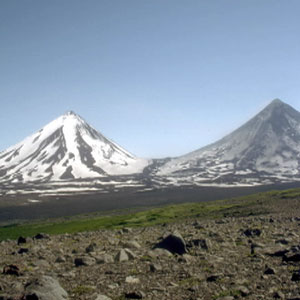Join us for conversations that inspire, recognize, and encourage innovation and best practices in the education profession.
Available on Apple Podcasts, Spotify, Google Podcasts, and more.

Stratovolcano
During this session, you will have an opportunity to build understandings to help you:
What do the lush, tropical islands of Hawaii have in common with the barren, cool summits of the Cascade Mountains in the northwestern United States? Both provide dramatic evidence of plate tectonics in the form of volcanoes and earthquakes. In this session, we investigate how these phenomena are connected to the movement of plates. As we examine what happens at and between plate boundaries, our focus shifts to the mechanisms deep within the Earth that drive what we observe at its surface.
The beautiful islands of Hawaii harbor a mystery. Evidence found on each of the eight major islands indicates that they all grew from the seafloor by volcanic eruptions. Yet, when visiting Hawaii today, we can see that only one of the islands is home to an active volcano. What happened? What shut down the other Hawaiian volcanoes? And what does this tell us about how the Earth functions?
We join volcanologists Dr. Dave Sherrod and Dr. Chuck Blay to investigate the nature of volcanoes and volcanic eruptions. Our hosts, Britt and Joe, along with geophysicist Dr. Michael Manga, invite us to use everyday items like a can of soda to understand the forces involved. Our focus shifts to examine how tectonic plates move relative to one another and what happens when plates interact at boundaries. One famous example — the San Andreas Fault in California — is described by geologist Dr. Keith Klepeis as we consider the causes and effects of earthquakes. Then, the mystery of the extinction of the Hawaiian volcanoes is unraveled as our scientists describe evidence supporting the hotspot story of Hawaii’s formation. Finally Dr. Andy Kurtz introduces us to Hawaii’s newest volcano, which is still underwater. These explorations ultimately lead us to theorize about the mechanisms of plate movement.
During the program, interviews with students uncover their ideas about volcanoes. We visit Ariel Owen’s sixth-graders at the Foothills Middle School in Walnut Creek, California, and listen in as they discover the connections between plate boundaries and the occurrence of volcanoes and earthquakes using a computer-based curriculum.